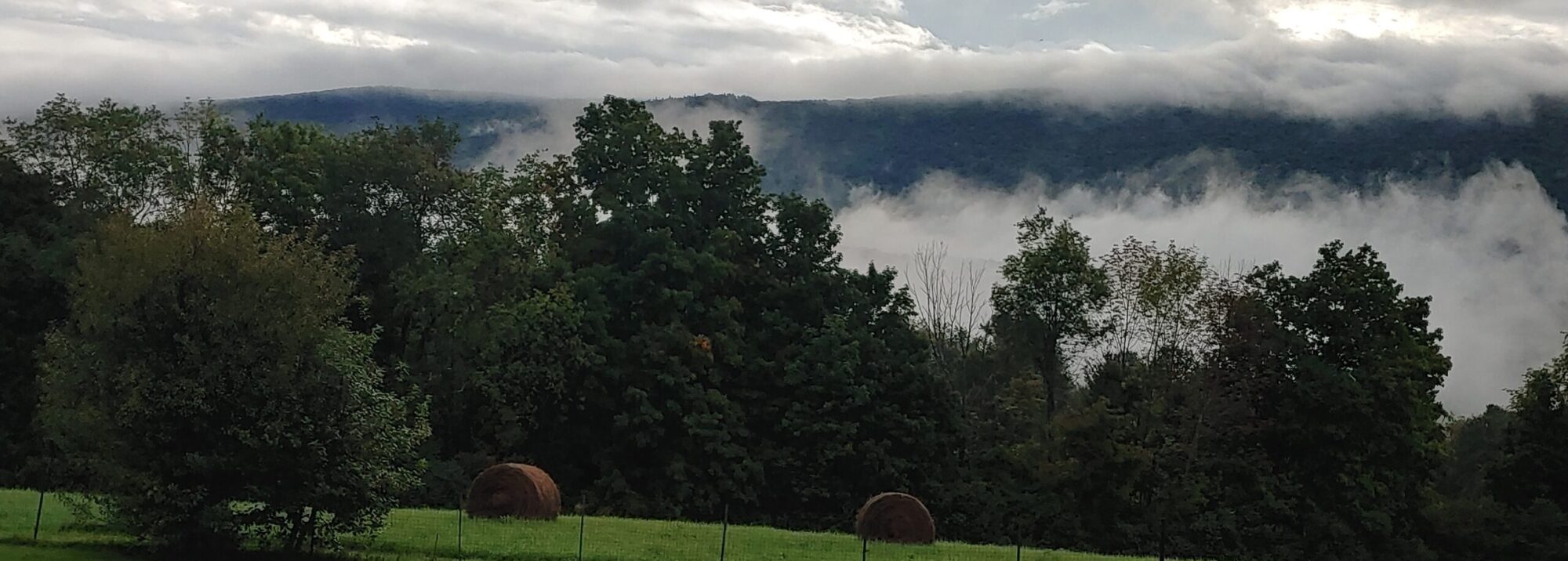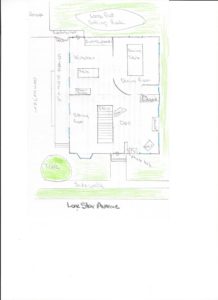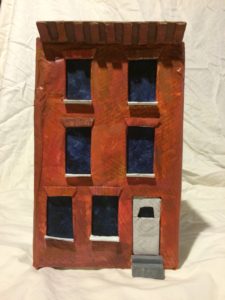The Kindergarten year that began in the sunny Hawaiian September picked up in New Hampshire’s snowy January. My parents rented a house on Gray Avenue, across a local park from Lone Star Avenue. There were lots of kids in the neighborhood and some good trees to climb. In Autumn, my friends and I raked fallen leaves into multi-color floor plans – houses that lasted until a good breeze blew them to pieces. But the best part of my Gray Avenue home was what was in back of it. Well hidden from the street, stretching back from the top of the 10′ high backyard retaining wall, was a magic forest.
Like most enchanted lands, this one had a disguised entrance: a cinderblock wall marking the property line, separating our back yard from the next door neighbor’s. Block by block, the wall height decreased as it extended toward the street, until it was only one block high – a staircase to the springy pine needle floor beneath the tall firs. A few silent steps under the trees put the houses out of view. The light filtered through pine branches and all was quiet. A few minutes of resting among tree roots was rewarded with bird song and rabbit sightings. Ants moved over fallen branches covered in lichen and toadstools. Little hollows were scattered throughout the forest, full of pine scent and rabbit holes.
In the middle of it all, at the end of an upward winding drive, was a fairy cottage made of wood. In the heat and light midday, its red/brown shingles were bathed in the green of sunlight through the evergreen canopy. It was a most welcoming and most mysterious dwelling. I never caught sight of the forest guardians who lived there, but a few times at twilight I thought I saw two silhouettes against a picture window.
The last time I ventured into the forest behind Gray Avenue, I was thirteen years old – many years after I lived there. The staircase was still there, the roofs of Gray Avenue disappeared after a few paces, and my footsteps made no sound and left no mark on the needle strewn ground. The hollows, holes, ants, and birds welcomed me back. The wooden cottage still stood in the middle, lit by the forest filtered light. It was still there, this refuge just beyond the ordinary backyards on an average street in a beat-up old town. Still hidden to most, always welcoming to those who seek it in childlike faith and wonder.
But only a child, or one who will become like a child, will ever think to seek beauty and peace on Gray Avenue, just past the back wall and up a few cinder block steps.




 Picture by Jared Fredrickson
Picture by Jared Fredrickson